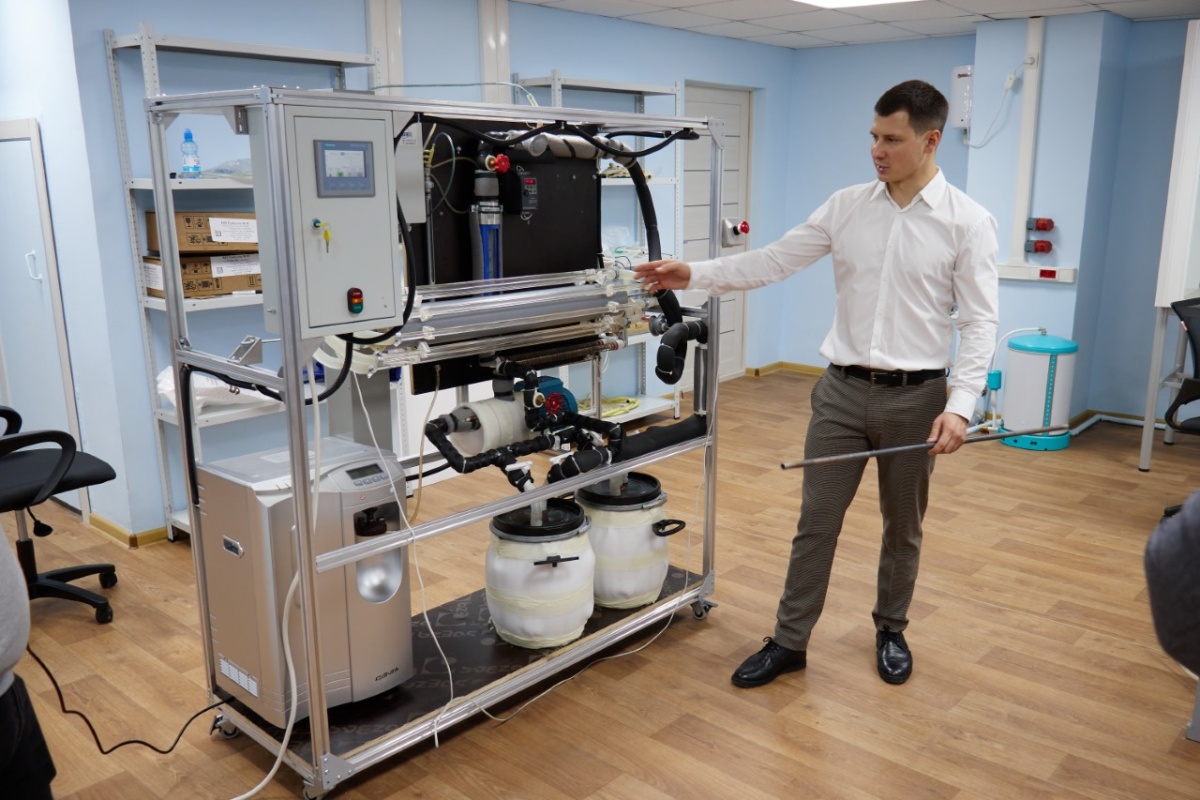
Rosatom fuel company TVEL and the Troitsk Institute of Innovative & Thermonuclear Research (TRINITI) have developed a technology to decontaminate radiation-contaminated metal equipment using ozone baths. TVEL says it is much more efficient than foreign counterparts, and makes it possible to significantly reduce time needed to treat secondary liquid radwaste.
NPP equipment made of corrosion-resistant steels is usually decontaminated by chemical methods. Elements that require the removal of residual radioactivity are washed for a long time using special solutions including potassium permanganate as an alkali, then acid. The process takes 6-8 hours to eight hours, is costly, and results in the formation of a large volume of secondary liquid radioactive waste (LRW).
TRINITI specialists, commissioned by TVEL, have developed an alternative method. Instead of using a solution of potassium permanganate, water saturated with ozone bubbles in a very high concentration poured into the equipment cavity or into a decontamination bath and is heated to 95ºC. Ozone is a non-aggressive, environmentally friendly and strong oxidising agent. Cleaning with this water-gas mixture takes only 20 minutes, says Igor Vtorushin, project manager from TRINITI. This not only saves time and resources, but is also safer – the faster the cleaning process, the lower the radiation dose.
It is also more efficient. Extensive "bathing" of radioactively contaminated products in a decontamination bath with a solution of potassium permanganate requires repeated replacement of the reagent. “Ozone does not introduce any additional chemical compounds into LRW, unlike potassium permanganate,” explains Vtorushin. After use, the ozone-containing water does not need to be changed, it is only necessary to increase the ozone content to add “bubbles”. The volume of LRW does not change even after three or four purification cycles.
“Recycling of secondary LRW is complex and costly,” says Alexander Ermakov, chief expert in decommissioning nuclear & radiation hazardous facilities at TVEL. “It requires systems for collection and transportation, installations for processing and curing. Cured products in special containers, after temporary storage, are transferred to radioactive waste disposal sites.” This entire chain involves both serious technological effort and large financial costs. “Our technology does not use so many chemically hazardous reagents – our reagent is ozone, a form of oxygen,” Ermakov explains. “Before and after processing, the parts are washed with a solution of oxalic acid, but its concentration is weak and the reagents entering the LRW are reduced tenfold. As a result, the processing of LRW is simplified, and we can send much less waste to disposal sites.”
The use of ozone is not exclusive to Russia. Toshiba, for example, uses an aqueous ozone solution for decontamination, but the operating temperature for dissolving the oxide film is only 70ºC. However, the solubility of ozone decreases as the temperature increases and so its concentration in the solution decreases. The rate of loosening of the oxide film on the steel and the transition of the radionuclides contained in it into the ozone solution increases sharply with increasing temperature. TRINITi scientists have taken a significant step forward by using high concentration ozone in the gaseous state. This makes it possible to increase the temperature of the medium to 95ºC and ozone is practically insoluble in water at this temperature.
“At a temperature close to 95ºC, chromium oxide enters into an intense reaction not with ozone dissolved in water, but with gaseous ozone diffusing through a thin layer of water in a gas bubble,” Vtorushin explains. “The smaller the bubble and the thinner the water film, the faster the diffusion of ozone and the oxidation of chromium oxide. We have equipped the plant with ozone generators, which allow the production of ozone with a concentration of over 200 mg/l. Foreign analogues have a maximum of 100 mg/l. Concentrated ozone and control of the dispersion of the gas phase at a high temperature of the liquid phase provides an advantage.”
TRINITI has built an experimental stand for testing high-concentration ozone decontamination modes and a transportable modular stand for decontamination of NPP pipe equipment. “Now development is at the stage of model experiments – with elements that have the dimensions of real equipment. Tests on a real object are planned for this year,” says Ermakov. Full-fledged full-scale tests will be held in Seversk, on steam generators at the Pilot and Demonstration Centre for Decommissioning Uranium-Graphite Reactors. A modular stand will be sent there. At the same time, another site is being prepared – at the Mayak radiochemical plant in Ozersk.
“They decided to use the technology to decontaminate dismantled collapsible equipment made of corrosion-resistant chromium-containing alloys and steels,” says Natalya Kuznetsova, head of the testing laboratory of the Mayak Central Laboratory. TRINITI experts are estimating the costs of upgrading the decontamination site at the radiochemical plant to put in place the new technology. Vtorushin says. if the bench tests are successful, experimental equipment for decontamination using high concentration ozone will be in use at Rosatom enterprises by 2025.